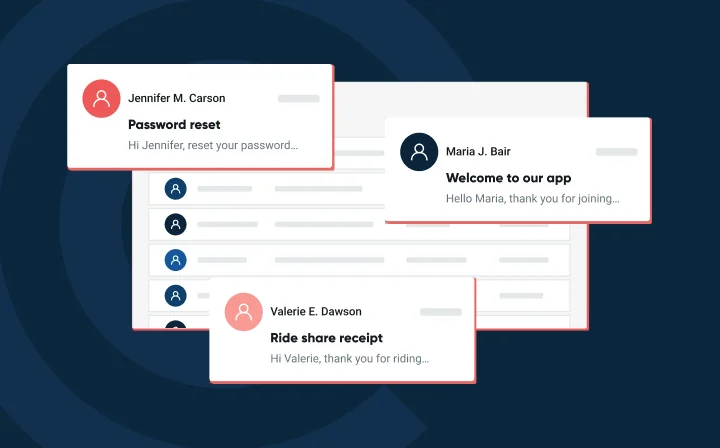Make email accessibility your New Year’s resolution


As strange as it may seem, accessibility – or making content consumable for all users regardless of ability – is still a new concept online and in emails. The good news is that companies such as Accessibe are making it their mission to make the web accessible by 2025. The bad news is that this means accessibility is, for many organizations, still too complicated and too poorly mastered to be integrated into practices and must be delegated to a third-party company.
You may wonder if you need email accessibility in the first place. First of all, more people are affected by issues of accessibility than you might think. According to the WHO, nearly one billion people (yes, more than one in ten people!) suffer from a visual impairment (like dyslexia or color blindness), and many of them need assistive technology to consume content.
Secondly, not offering an accessible version of emails has a significant impact on your readership as it will be impossible for some people to make use of the information contained. In terms of usability, it’s therefore much worse than having, say, an email that’s not accurate to the nearest pixel.
If we consider the two previous points and then think about the time and effort that we spend optimizing our emails simply to make them look nice in Outlook.com, which represents much less than 1% of the market, something doesn’t add up when it comes to avoiding accessibility.
If the ethical reasoning isn’t enough, accessibility also pays off from a business perspective. If your emails aren’t accessible, you’re also missing out on a significant audience.
And if you have neither morals nor a mind for business (generally people have at least one of the two), then be aware that laws are being introduced to make accessibility mandatory.
Great to see you are still here and, hopefully, convinced by the need for accessibility. Looks like I’ve done my job here. So, what needs to be done? When we talk about accessibility, we can generally split the problem into three categories.
There’s a whole lot of things that can be improved, but we’re going to focus here on the easiest practices to implement in order to optimize accessibility of your emails.
In general, your email is built around content to be shared. You can (should) ensure that this content is accessible by checking, among other things, that:
Now that you have the perfect content, you want to make it look as nice as possible. That’s where things can go wrong. From a design perspective, it is important to make sure that you:
Ok, you have the content and design, so now you can move to implementation and coding. So as not to spoil all the work of our friends (the writers and designers), you should:
Yes I know, we are all super busy and accessibility is yet another thing to check when you already spend ages testing your emails on clients, including Lotus Notes. Fortunately, there’s an app for that.
In fact, there are lots of tools that let you test a whole lot of things: readability, semantics, etc. However, although these tools do their job very well, trying to integrate them into your process can be too manual and time-consuming and often remains a false resolution (that I know you will not keep).
We therefore recommend using Accessible-email.org to get started. This tool analyses an HTML file and sends you a list of errors and things to improve to make the email accessible. It is therefore super easy to integrate into a workflow, both for checking your email before sending it and for implementing good practices.
If you want to know more, either because it’s a subject that interests you or out of fear of being replaced by a machine, we recommend checking out the WCAG checklists. These checklists are organized by level (beginner, intermediate, advanced) and are a great way to increase your accessibility skills as you use them.
Email accessibility may feel difficult to implement at first, especially considering all of the other testing and creating you’re doing with your emails. But, by following best design, content, and coding practices, you can easily create emails that reach every member of your audience and provide them a great user experience.
We hope this article will help you to make accessibility a priority and that you will have realized it is both important and not so hard to do.